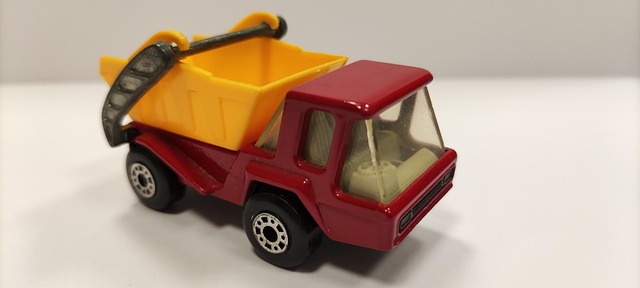Looking to register your car in California? Navigating the process can seem daunting, but with the right guide, it’s a breeze. This comprehensive step-by-step article breaks down everything you need to know, from understanding the California car registration process and gathering essential documents for VIN verification to choosing an approved registration location and paying fees. By following these simple steps, you’ll be on your way to securing your vehicle’s registration in no time.
- Understanding the California Car Registration Process
- Gather Required Documents for VIN Verification
- How to Conduct a Vehicle Identification Number (VIN) Check
- Choosing an Approved Registration Location in California
- Paying the Registration Fees and Obtaining Your Plate
Understanding the California Car Registration Process

Understanding the California Car Registration Process begins with recognizing that it’s a multi-step procedure designed to ensure every vehicle on California roads is legally registered and compliant. The process involves several key elements, including identifying your vehicle through a Vehicle Identification Number (VIN) verification, which serves as a unique fingerprint for each car. This meticulous approach helps state authorities track vehicle ownership, history, and any outstanding recalls or legal issues.
California residents typically initiate registration by gathering essential documents such as proof of purchase, insurance coverage, and identification. Once these are prepared, the next step involves conducting a VIN inspection to confirm the vehicle’s authenticity and identify any potential red flags. Leveraging services like a mobile VIN inspection or enlisting the help of a mobile VIN verifier can streamline this process, allowing owners to efficiently verify their car’s history before submitting the registration application.
Gather Required Documents for VIN Verification

Before you can register your car in California, you’ll need to go through a process called VIN (Vehicle Identification Number) verification. This step is crucial as it ensures the vehicle’s authenticity and history. To start, gather all the essential documents, including your car’s registration certificate from the previous state, proof of insurance, and a valid driver’s license. Additionally, you will require the vehicle’s title, which can often be obtained from the previous owner or lender.
For a hassle-free vin inspection, consider using a mobile vin verifier service. These services send a professional to your location, saving you time and effort. They’ll cross-check your car’s details against national databases to ensure everything is in order, which is particularly important if the vehicle has been involved in any accidents or has an unclear history.
How to Conduct a Vehicle Identification Number (VIN) Check

To ensure a smooth registration process, conducting a Vehicle Identification Number (VIN) check is a crucial step. This verification process helps to confirm the vehicle’s history and ensures that it meets all legal requirements for registration in California. You can perform a VIN inspection yourself using several methods, including online tools or mobile vin verification apps. These services allow you to input your VIN to access detailed information about the vehicle, such as its make, model, year, and any reported accidents or outstanding loans.
For a more comprehensive and official vin inspection, you can also contact a local California Department of Motor Vehicles (DMV) office. They offer services that verify the authenticity of the VIN and check for any discrepancies in the vehicle’s records. Additionally, some third-party companies provide mobile vin inspection services, where a professional will come to your location to conduct the check on your behalf. This flexibility ensures that you have access to reliable information, making the registration process more efficient.
Choosing an Approved Registration Location in California

When registering your car in California, one crucial step is to select an approved registration location. The state offers various options, including Department of Motor Vehicles (DMV) offices and certain third-party service providers. It’s essential to choose a reputable location that can facilitate the entire process efficiently.
California residents often opt for mobile vin inspection services or visit specialized auto service centers. These venues are equipped to handle vehicle registration, including performing a VIN verification check, which is a critical aspect of ensuring the car’s authenticity and history. A reliable mobile vin verifier or local service center will streamline the registration process, saving you time and effort while adhering to California’s stringent regulations.
Paying the Registration Fees and Obtaining Your Plate

After completing the registration application, it’s time to settle the registration fees. The California Department of Motor Vehicles (DMV) charges a base fee for vehicle registration, which varies based on your vehicle type. There may also be additional fees, such as a titling fee and a state emissions inspection fee, depending on your circumstances. Once all fees are paid, you’ll receive your vehicle’s unique Vehicle Identification Number (VIN) verification report, which is crucial for the next step.
This VIN verification process can be completed through various methods. Many residents opt for a mobile vin inspection or use a mobile vin verifier to save time and effort. Alternatively, you can visit an authorized DMV location where a staff member will conduct the vin inspection, ensuring your vehicle’s information matches the records and issuing your official license plate once everything is in order. Remember, accurate VIN verification is essential before proceeding with plate issuance to avoid any legal issues or delays.
Registering a car in California involves several straightforward steps, from gathering necessary documents for VIN verification to choosing an approved registration location. After conducting the VIN check and paying the corresponding fees, you’ll receive your vehicle’s license plate, completing the process. Remember to keep your registration up-to-date to ensure legal compliance and convenience.
